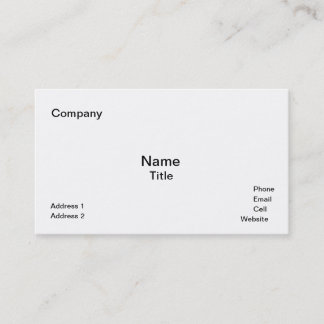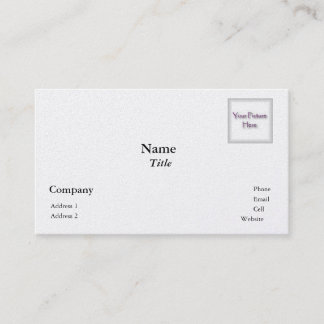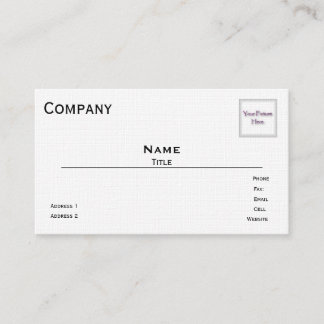To improve your pitching technique—which, in turn, will give you more confidence—we asked successful entrepreneurs from Young Entrepreneur Council (YEC) the following question:
. What is the best approach for practicing your pitch for investors or potential clients, particularly if you’re not feeling confident?
1. Do your homework
 If you’re feeling unsure about yourself or lack confidence in your pitch, take a step back and try to identify the weaknesses you are feeling. I’ve always found that when I do as much due diligence as possible on who I’m pitching to, I feel more confident. Knowing the business experience of the person I’m pitching allows me to make my pitch more personalized and compelling. —Brian David Crane, Caller Smart Inc.
If you’re feeling unsure about yourself or lack confidence in your pitch, take a step back and try to identify the weaknesses you are feeling. I’ve always found that when I do as much due diligence as possible on who I’m pitching to, I feel more confident. Knowing the business experience of the person I’m pitching allows me to make my pitch more personalized and compelling. —Brian David Crane, Caller Smart Inc.2. Practice the pitch 100-plus times
 Practice makes perfect, as they say. You’ll be infinitely more confident doing your pitch if you know the material and it becomes second nature. The biggest reason for freezing on stage is that people forget the material or aren’t confident they know it. Practice your pitch 100-plus times on your own, or preferably in front of others, to get comfortable with the material. —Andy Karuza, Relm Wellness
Practice makes perfect, as they say. You’ll be infinitely more confident doing your pitch if you know the material and it becomes second nature. The biggest reason for freezing on stage is that people forget the material or aren’t confident they know it. Practice your pitch 100-plus times on your own, or preferably in front of others, to get comfortable with the material. —Andy Karuza, Relm Wellness3. Talk in front of a mirror, then friends
 Practice your pitch in front of a mirror first, then perform it in front of friends and/or family members. Using a two-pronged approach will allow you to see things that others might notice about you (like smiling for example), and letting others in will give you outside feedback that you probably wouldn’t catch on to. It’s the best approach because you have at least two more sets of eyes on your pitch. —Andrew Schrage, Money Crashers Personal Finance
Practice your pitch in front of a mirror first, then perform it in front of friends and/or family members. Using a two-pronged approach will allow you to see things that others might notice about you (like smiling for example), and letting others in will give you outside feedback that you probably wouldn’t catch on to. It’s the best approach because you have at least two more sets of eyes on your pitch. —Andrew Schrage, Money Crashers Personal Finance4. Build rapport
 Investors and clients have heard hundreds, or even thousands, of pitches. By building rapport, for example, through small talk, you can differentiate yourself from your many competitors while also increasing your confidence by making the interaction more empathetic. —Frederik Bussler, bitgrit Inc.
Investors and clients have heard hundreds, or even thousands, of pitches. By building rapport, for example, through small talk, you can differentiate yourself from your many competitors while also increasing your confidence by making the interaction more empathetic. —Frederik Bussler, bitgrit Inc.5. Prepare for unexpected questions
 One big fear during a pitch for investors or potential clients is being stumped or stumbling over unexpected questions. So, instead of just practicing your pitch, come up with some questions that could be asked and practice your answers for them, too. You could even ask coworkers or friends to submit questions so that you can come up with answers to a wide range of potential inquiries. —Stephanie Wells, Formidable Forms
One big fear during a pitch for investors or potential clients is being stumped or stumbling over unexpected questions. So, instead of just practicing your pitch, come up with some questions that could be asked and practice your answers for them, too. You could even ask coworkers or friends to submit questions so that you can come up with answers to a wide range of potential inquiries. —Stephanie Wells, Formidable Forms6. Time yourself
 A great way to objectively evaluate your pitch before presenting it is to time how long it takes for you to say it. This forces you to think about your pitch in a different way, which can help you decide what does and doesn’t need to be said. After doing this a few times, you’ll feel a lot more confident about the quality of both your presentation and the pitch itself. —Bryce Welker, Beat The CPA
A great way to objectively evaluate your pitch before presenting it is to time how long it takes for you to say it. This forces you to think about your pitch in a different way, which can help you decide what does and doesn’t need to be said. After doing this a few times, you’ll feel a lot more confident about the quality of both your presentation and the pitch itself. —Bryce Welker, Beat The CPA
7. Record yourself
 It may feel awkward at first to watch yourself on video, but you will get used to it, and doing this will help you to see facial expressions and delivery. Share these recordings with others to get their tips.—Peter Daisyme, Hostt
It may feel awkward at first to watch yourself on video, but you will get used to it, and doing this will help you to see facial expressions and delivery. Share these recordings with others to get their tips.—Peter Daisyme, Hostt
8. Practice positive self-talk
 You can practice your pitch all you want, but the truth is if you’re not feeling confident, it’s not going to go as well as you want it to. So spend some time practicing positive self-talk. Tell yourself that you’re confident, that you’re going to do amazing, and that everyone will be impressed with your presentation. Feeling confident will make all the difference heading into your pitch. —John Turner, SeedProd LLC
You can practice your pitch all you want, but the truth is if you’re not feeling confident, it’s not going to go as well as you want it to. So spend some time practicing positive self-talk. Tell yourself that you’re confident, that you’re going to do amazing, and that everyone will be impressed with your presentation. Feeling confident will make all the difference heading into your pitch. —John Turner, SeedProd LLC
 It may feel awkward at first to watch yourself on video, but you will get used to it, and doing this will help you to see facial expressions and delivery. Share these recordings with others to get their tips.—Peter Daisyme, Hostt
It may feel awkward at first to watch yourself on video, but you will get used to it, and doing this will help you to see facial expressions and delivery. Share these recordings with others to get their tips.—Peter Daisyme, Hostt8. Practice positive self-talk
 You can practice your pitch all you want, but the truth is if you’re not feeling confident, it’s not going to go as well as you want it to. So spend some time practicing positive self-talk. Tell yourself that you’re confident, that you’re going to do amazing, and that everyone will be impressed with your presentation. Feeling confident will make all the difference heading into your pitch. —John Turner, SeedProd LLC
You can practice your pitch all you want, but the truth is if you’re not feeling confident, it’s not going to go as well as you want it to. So spend some time practicing positive self-talk. Tell yourself that you’re confident, that you’re going to do amazing, and that everyone will be impressed with your presentation. Feeling confident will make all the difference heading into your pitch. —John Turner, SeedProd LLC9. Know your pitch by heart
 The best way to feel ready for a pitch is to know your pitch forward and backward. I accomplish this by weaning myself off the page. Even if I will have the pages in front of me when I do the real thing, I want to know I can talk through it without being reliant on what I have written down. This will give you the confidence to be yourself in the room and connect more with your listeners. —Zach Binder, Bell + Ivy
The best way to feel ready for a pitch is to know your pitch forward and backward. I accomplish this by weaning myself off the page. Even if I will have the pages in front of me when I do the real thing, I want to know I can talk through it without being reliant on what I have written down. This will give you the confidence to be yourself in the room and connect more with your listeners. —Zach Binder, Bell + Ivy10. Make sure it’s engaging
 As someone who has given dozens of client pitches, I’ve learned the most important thing to do is to engage your audience, and I have found the best way to do this is by being relatable, and in turn, likeable. I try to listen to every point and answer every question. —Kristin Kimberly Marquet, Fem Founder
As someone who has given dozens of client pitches, I’ve learned the most important thing to do is to engage your audience, and I have found the best way to do this is by being relatable, and in turn, likeable. I try to listen to every point and answer every question. —Kristin Kimberly Marquet, Fem Founder11. Hire a speaking coach
 Practicing by actually talking to investors is great, but it actually makes learning harder because you’ll be focused on the outcome, not the process. Hire a public speaking coach and practice your pitch with them. They’ll be able to properly analyze what you’re doing and give you practical advice, ranging from your pitch to tempo. Changes will be rapid and your confidence will skyrocket. —Karl Kangur, Above House
Practicing by actually talking to investors is great, but it actually makes learning harder because you’ll be focused on the outcome, not the process. Hire a public speaking coach and practice your pitch with them. They’ll be able to properly analyze what you’re doing and give you practical advice, ranging from your pitch to tempo. Changes will be rapid and your confidence will skyrocket. —Karl Kangur, Above House12. Hire an editor
 It’s common for business owners to feel nervous about pitching to clients and investors because they are not confident in their writing skills. They often feel like their script and talking points are subpar. An editor can help you refine your pitch to help you feel more confident when pitching to investors or clients. —Syed Balkhi, WPBeginner
It’s common for business owners to feel nervous about pitching to clients and investors because they are not confident in their writing skills. They often feel like their script and talking points are subpar. An editor can help you refine your pitch to help you feel more confident when pitching to investors or clients. —Syed Balkhi, WPBeginner13. Involve storytelling
 Perhaps you have trouble demonstrating your pitch to potential clients and investors, but what if you were to add the art of storytelling into the mix? This could be a great way to not only incorporate fun, but if there’s a story to back up your pitch, it also will help your investors see the situation from a different point of view. People love hearing about others’ experiences, so give it a shot. —Jared Atchison, WPForms
Perhaps you have trouble demonstrating your pitch to potential clients and investors, but what if you were to add the art of storytelling into the mix? This could be a great way to not only incorporate fun, but if there’s a story to back up your pitch, it also will help your investors see the situation from a different point of view. People love hearing about others’ experiences, so give it a shot. —Jared Atchison, WPForms14. Build a list of 100 investors
 The best way to practice your pitch to investors is to actually talk to investors. Another founder can talk about your delivery and your message, but they won’t have the insights into how investable the idea is. Build a huge list of target investors, and consider starting at the “bottom.” Practice on those investors that are good, but not your top selections. Then move up to your target funds. —Aaron Schwartz, Passport
The best way to practice your pitch to investors is to actually talk to investors. Another founder can talk about your delivery and your message, but they won’t have the insights into how investable the idea is. Build a huge list of target investors, and consider starting at the “bottom.” Practice on those investors that are good, but not your top selections. Then move up to your target funds. —Aaron Schwartz, Passport15% Off All Business Cards
VIEW ALL
$60.05
$54.85
$60.05
$60.05
$66.00
$60.05
$60.05
$60.05








No comments:
Post a Comment